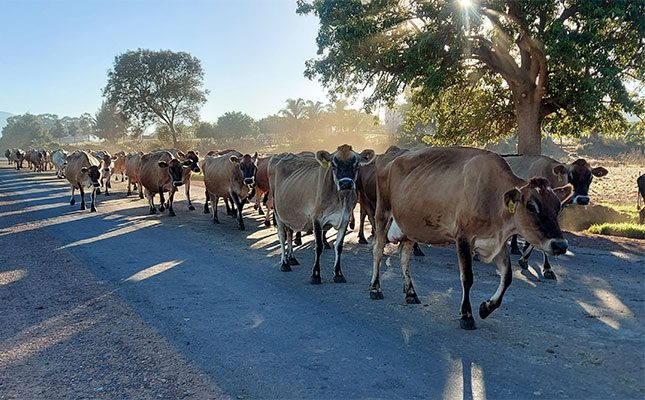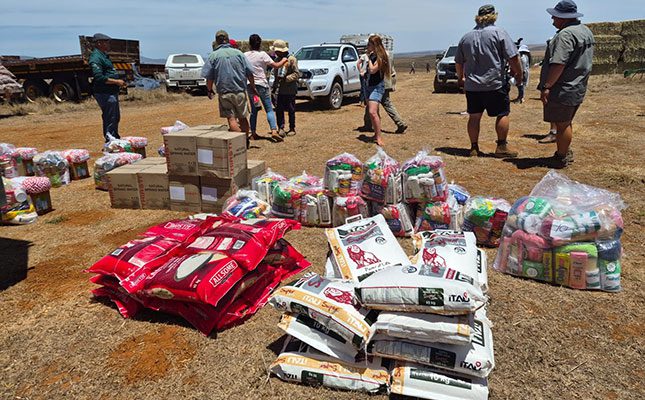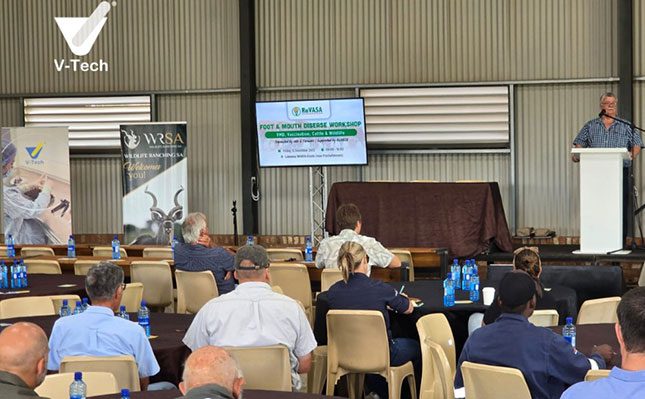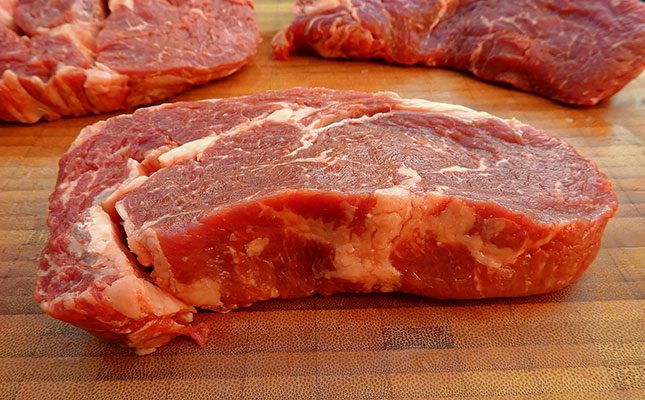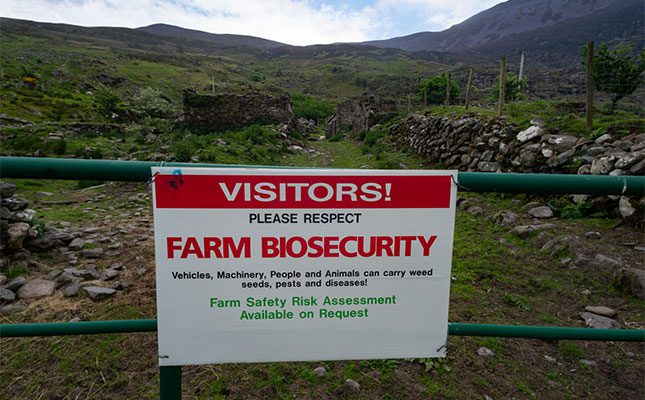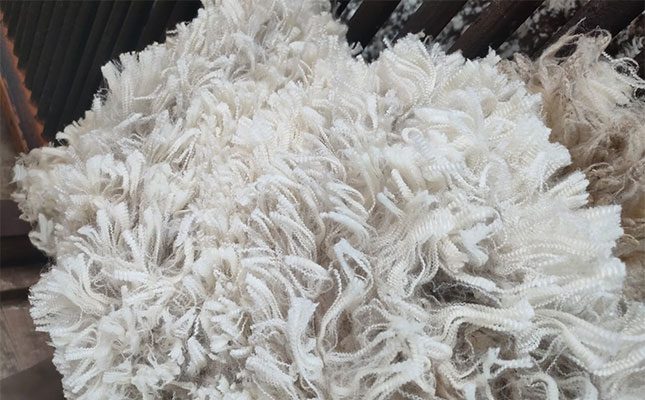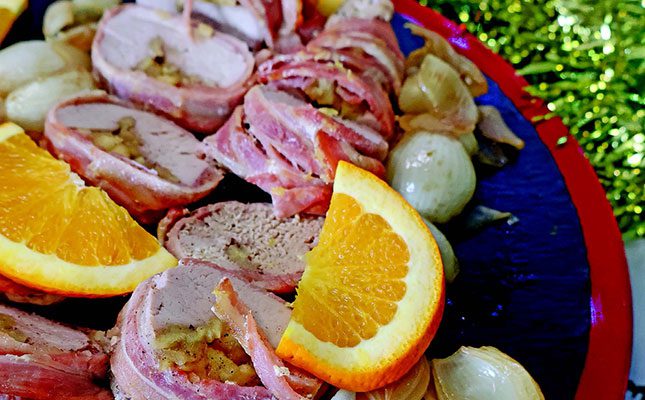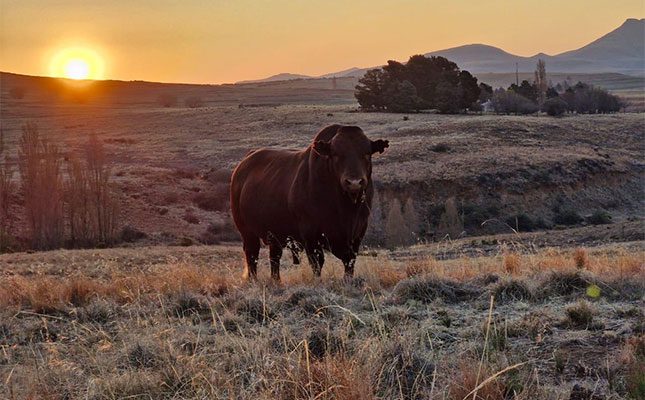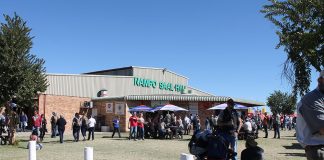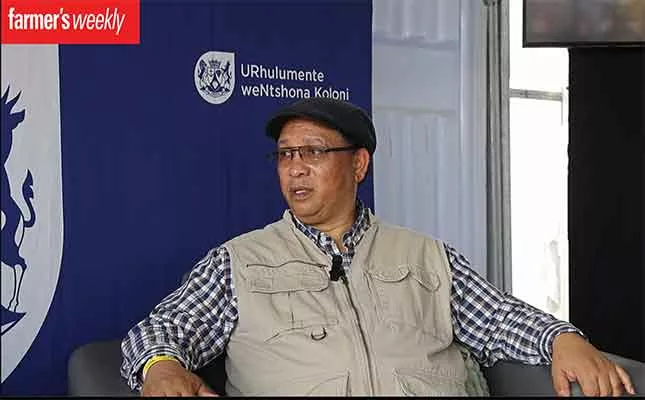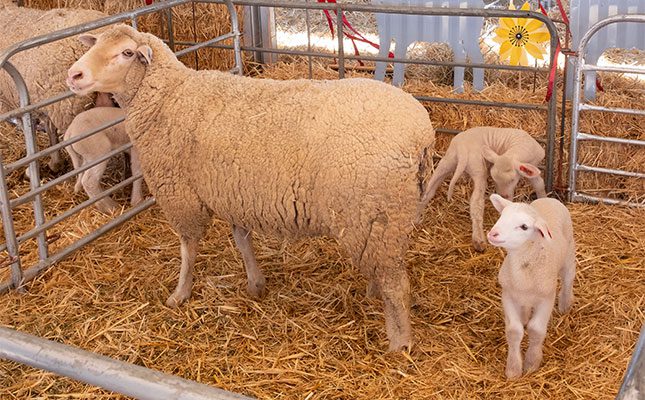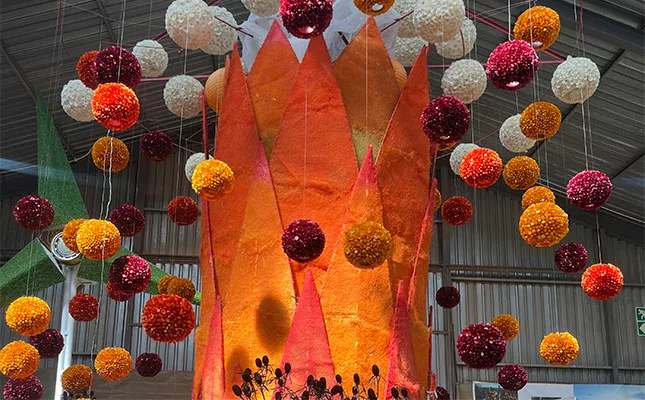
Photo: Octavia Avesca Spandiel
Speaking to Farmer’s Weekly, floral artist Marjolijn Malan, who has been part of the exhibition for the past six years, said the elements became her inspiration after witnessing farmers’ struggles with floods, drought, and shifting climates.
“For me, the theme is about the elements of nature that influence farming. Fire, water, wind, and earth were my main features, and I used everlasting flowers to represent them, because the elements are everlasting,” she explained.
Malan’s installation sent visitors on an immersive journey through the forces that shape agriculture and life. Her ‘fire’ feature incorporated everlasting flowers mounted over weeks of preparation, complemented by wild rosemary and a subtle smoke machine effect to mimic natural conditions.
Her ‘water’ design included a watermill crafted from a repurposed 40-year-old tree and metal panels.
“We built a white sea backdrop so the flowers could stand out. It was a way to show how farming always depends on water flow,” Malan said.
For ‘earth’, Malan used indigenous plants and featured the bontebok, an antelope endemic to the area. She incorporated plants collected from the veld to highlight how animals and vegetation were interdependent.
Nature’s mimicry also became a story within her work. Malan showcased a plant species whose seeds imitate droppings, tricking bontebok into dispersing them.
“Nature is so clever. The seeds simulate dung, the bontebok rolls them away and buries them, ensuring the plant’s survival,” she explained.
Malan’s exhibit also raised awareness about endangered plants in the Western Cape. Rare and nearly extinct fynbos species, often overlooked by the public, were displayed to remind visitors of the fragile biodiversity under threat.
She also included historic plants with fascinating backstories, such as the Brunsvigia josephinae, a bulb smuggled to Europe centuries ago and famously purchased by Napoleon Bonaparte for his wife Joséphine.
“It’s still growing in Versailles [in France] today. Most people have never seen this plant in [real life],” Malan added.
Her work went beyond aesthetics, weaving local agricultural struggles, environmental awareness, and South Africa’s global floral heritage into a single narrative.
The exhibition also hosted a competition run by the South African Flower Union, where designers from across the Western Cape showcased their creativity within the ‘elements’ theme.
National judges assessed the entries, but the public were also invited to vote for their favourites. Last year, more than 1 000 votes were cast, highlighting the growing enthusiasm for floral artistry as a means of cultural expression and community engagement.
For Carol Cholwich, marketing and sales manager at Weltevrede Flowers, this was her first year at Nampo Cape after moving from Johannesburg to Darling in the Western Cape. She described the experience as refreshing and more personalised than other exhibitions.
“I think visitors love it because it’s different. The art stage and the designs are incredibly creative, and people keep saying how beautiful it all is,” she said.
Weltevrede’s display featured vibrant anemones, Scabiosa, snapdragons, and statice. Particularly popular were their double snapdragons, which many visitors had never seen before.
“People often think some of our flowers aren’t real because they’re so big and perfect. But they are, and if looked after, they can last more than a week,” Cholwich added.
For exhibitors and visitors, the exhibition is more than a showcase of design skill and agricultural produce; it’s about the emotions flowers evoke.
“When people look at flowers, they bring joy and happiness into their lives,” Cholwich said.

